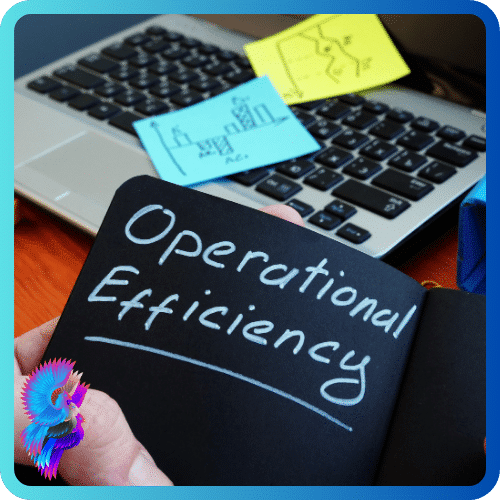Advertisements
Operational Planning
Navigating Efficiency in Organizational Execution
Introduction:
Operational planning is a critical component of the broader planning process within organizations, playing a pivotal role in translating strategic objectives into actionable and efficient processes.
It involves the detailed coordination and execution of activities to achieve specific operational goals.
This essay explores the key elements of operational planning, its significance, methodologies, and the role it plays in enhancing organizational effectiveness.
-
- Definition and Significance of Operational Planning
-
- Definition:
Operational planning is the process of defining the activities, resources, and timelines required to implement an organization’s strategic plans.
It focuses on the day-to-day tasks and actions needed to achieve specific objectives and contribute to the overall success of the organization.
-
- Significance:
Operational planning bridges the gap between strategic goals and day-to-day activities.
Operational planning ensures efficient allocation of resources, coordination of tasks, and optimization of processes to support the strategic direction of the organization.
Effective operational planning is fundamental to achieving organizational objectives and maintaining a competitive edge in the market.
-
- Key Elements of Operational Planning
-
- Setting Objectives:
The first step in operational planning is setting clear and measurable objectives.
These objectives should align with the broader strategic goals of the organization and provide a specific focus for operational activities.
-
- Resource Allocation:
Operational planning involves identifying and allocating resources, such as personnel, finances, and technology.
Efficient resource allocation ensures that the necessary tools and capabilities are available to execute operational tasks.
-
- Task Coordination:
Tasks and activities need to be coordinated to avoid duplication of effort and ensure that each team or department is working towards common objectives.
Task coordination is essential for optimizing workflows and enhancing overall efficiency.
-
- Timeline and Scheduling:
Operational planning includes developing timelines and schedules for the execution of tasks.
Operational planning helps prioritize activities, manage deadlines, and ensure that operational objectives are met within specified timeframes.
-
- Risk Management:
Identifying and mitigating risks is a crucial aspect of operational planning.
This involves assessing potential challenges, developing contingency plans, and implementing measures to address unforeseen obstacles that may arise during execution.
-
- Methodologies and Approaches to Operational Planning
-
- Bottom-Up Approach:
In a bottom-up approach, input is gathered from lower levels of the organization, and operational plans are developed based on the insights and expertise of frontline employees.
Fostering a sense of ownership and grounding plans in practical realities, this approach ensures that plans are based on the insights and expertise of frontline employees.
-
- Top-Down Approach:
A top-down approach involves senior management developing operational plans that are then communicated and implemented at lower levels.
This approach ensures alignment with strategic goals but may require effective communication to ensure understanding and commitment at all levels.
-
- Agile Operational Planning:
Agile methodologies emphasize flexibility and adaptability.
In operational planning, adopting agile principles allows organizations to respond quickly to changing circumstances, adjust priorities, and continuously improve processes based on real-time feedback.
-
- Scenario Planning:
Scenario planning involves developing multiple hypothetical scenarios and preparing operational plans for each.
This approach enables organizations to be proactive in responding to various potential situations, enhancing resilience and preparedness.
-
- Integration with Strategic Planning
-
- Alignment with Strategic Objectives:
Operational planning must align with the strategic objectives set by top management. Each operational objective should contribute directly to the fulfillment of broader strategic goals, ensuring a cohesive and integrated approach.
-
- Feedback Loop:
An effective operational planning process includes a feedback loop with strategic planning.
Regular feedback on the execution of operational plans informs adjustments to both operational and strategic objectives, creating a dynamic and responsive planning environment.
-
- Resource Optimization:
Strategic planning sets the overarching direction, and operational planning optimizes the allocation of resources to support that direction.
Integrating these two planning processes ensures that resources are directed towards activities that most effectively contribute to the achievement of strategic goals.
-
- Case Studies
-
- Toyota Production System:
The Toyota Production System (TPS) is a renowned example of effective operational planning.
TPS emphasizes just-in-time production, continuous improvement, and waste reduction.
Operational planning in TPS ensures efficient utilization of resources and a focus on quality.
-
- Amazon Fulfillment Centers:
Amazon’s operational planning is exemplified in its fulfillment centers.
Through meticulous coordination, automation, and real-time data analysis, Amazon optimizes its operational processes to fulfill customer orders quickly and efficiently.
-
- Challenges in Operational Planning
-
- Uncertainty and Change:
Operational planning may face challenges in dynamic environments where uncertainty and rapid changes are prevalent.
Adapting operational plans to unexpected circumstances requires agility and proactive risk management.
-
- Communication and coordination:
Ensuring effective communication and coordination across different departments or teams is a common challenge.
Inconsistent communication can lead to misalignment of tasks, delays, and inefficiencies.
-
- Balancing short-term and long-term objectives:
Striking a balance between short-term operational goals and long-term strategic objectives can be challenging.
Operational planning needs to align with the organization’s long-term vision while addressing immediate priorities.
-
- Future Trends and Conclusion
-
- Digitalization and Technology Integration:
The future of operational planning involves increased digitalization and the integration of advanced technologies.
Artificial intelligence, machine learning, and data analytics will play a significant role in optimizing processes and enhancing decision-making.
-
- Sustainability Integration:
As organizations place greater emphasis on sustainability, operational planning will incorporate environmentally friendly practices.
This includes resource-efficient processes, waste reduction, and the integration of sustainable practices into operational objectives.
- conclusion:
Operational planning is a cornerstone of organizational efficiency and effectiveness.
By setting clear objectives, optimizing resources, and aligning activities with strategic goals, organizations can navigate the complexities of the business environment.
The integration of operational planning with strategic planning ensures a holistic and coordinated approach to achieving organizational success.
As organizations evolve, embracing agile methodologies, technology integration, and sustainability considerations will be key to shaping the future of operational planning.
Advertisements
























